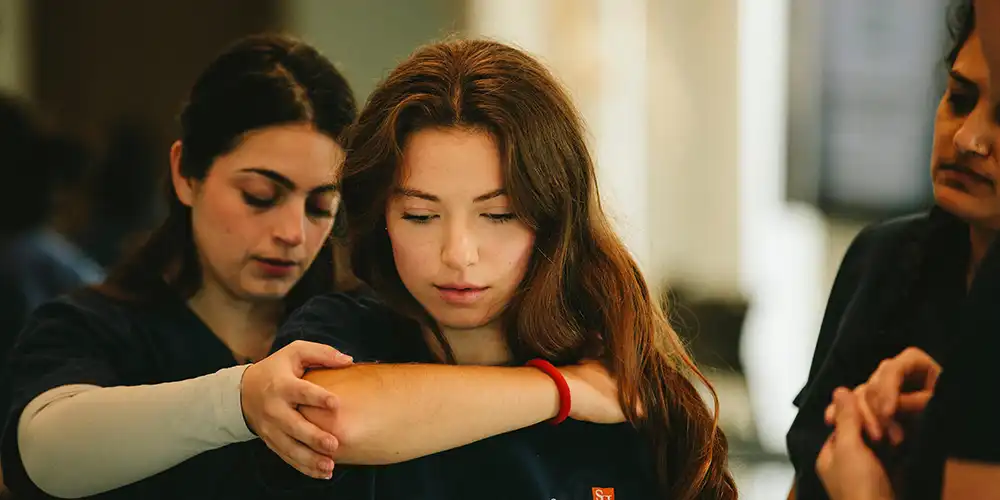What is Osteopathic Medicine?

Osteopathic medicine focuses on whole-body health. Doctors of Osteopathic Medicine (DOs) are fully licensed physicians who go through four years of medical school and residency. They are doctors who diagnose, treat, prescribe medications, and perform surgery. But DOs are also trained to approach care with a deeper understanding of how the body’s systems work together, and how lifestyle, environment, and preventive care contribute to long-term wellness. They learn how to treat the whole person, not just the person’s symptoms, by understanding how the body’s systems work together to support healing and good health
The Osteopathic Difference
DOs are taught to recognize how a patient’s lifestyle, environment, and habits contribute to their overall health. They use the latest tools in modern medicine but also develop skills to support healing in ways that are more personal. Their education includes training in communication, clinical reasoning, and hands-on treatment.
At Sam Houston State University College of Osteopathic Medicine (SHSU-COM), students learn Osteopathic Manipulative Medicine (OMM) throughout all four years of study. OMM uses gentle, hands-on techniques to support healing, relieve pain, and restore function. This ongoing training helps students become thoughtful, well-rounded physicians.
The Four Tenets of Osteopathic Medicine
Osteopathic medicine is built on a philosophy that emphasizes the unity of body, mind, and spirit. The four foundational principles are:
- The body is a unit; the person is a unit of body, mind, and spirit.
- The body is capable of self-regulation, self-healing, and health maintenance.
- Structure and function are reciprocally interrelated.
- Rational treatment is based on these principles.
OMM in Practice
Osteopathic Manipulative Medicine (OMM) is a set of hands-on techniques used to treat the body’s muscles, joints, and tissues. DOs use OMM to reduce pain, improve mobility, and support recovery from illness or injury.
- Headaches and migraines
- Back and neck pain
- Asthma and breathing concerns
- Joint and muscle pain
- Digestive issues.
Fast Facts
- 50 Number of states where DOs are licensed
- >25% Percentage of medical students becoming DOs
- 4 Years of OMM curriculum

Where a DO Can Take You?
SHSU-COM student doctors are matching into top residency programs across the country.